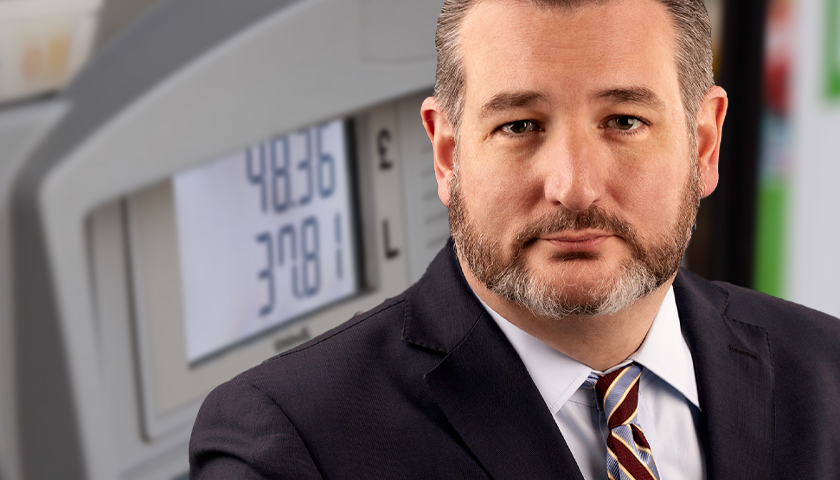by Bethany Blankley
U.S. Sen. Ted Cruz, R-Texas, says that skyrocketing inflation and long lines at gas stations are a result of President Joe Biden’s policies and are returning the U.S. to the days of high inflation, high cost of living and gas lines under President Jimmy Carter.
Eleven months into Biden’s term, inflation reached a 31-year high and gas prices surpassed a seven-year high.
“I’ve got to tell you the trillions that are being spent, the trillions in debt that’s being racked up, it is historic and not in a good way,” Cruz told Fox News’ “Sunday Morning Futures.”
“You know, it kind of reminds me of the television show ‘That 70s Show,’” he said. “It feels like Joe Biden is Jimmy Carter all over again and we’re seeing skyrocketing inflation, we’ve seen gas lines, we’ve seen a Middle East crisis, we’ve seen hostages, we’ve seen surrender, in this case in Afghanistan – all of these problems are replicating and it turns out cause and effect still operates, that when you spend trillions of dollars, you cause inflation.”
Referring to the Biden administration, he said, “They want you not to be able to fill up gas in your car,” he added. “They want your electricity bill to be higher. They want your heating bill to be higher.”
Cruz also criticized the $1.9 trillion COVID relief bill passed by Congress, saying it was “cruel” to spend $1.9 trillion “on a so-called COVID relief bill that wasn’t COVID relief” and then spend another $1.2 trillion on an infrastructure bill, “much of which is not infrastructure.”
His remarks come after White House chief of staff Ronald Klain retweeted a claim that inflation and supply chain issues were “high class problems” and White House Press Secretary Jen Psaki told CNN’s Jake Tapper that increasing prices and inflation was because “more people have jobs. More people are buying goods. That’s increasing the demand. That’s a good thing.”
Vice President Kamala Harris told reporters on Friday that rising costs were “something we take very seriously.” The Biden administration, she said, was addressing rising costs by alleviating supply chain backlogs and the proposed bills would not worsen inflation because the federal government was paying for it.
“Build Back Better is not going to cost anything. We’re paying for it,” Harris said.
Other White House officials have repeatedly claimed that the spending bills will cost “zero dollars” because they include plans to tax “the very rich.”
But the nonpartisan Committee for a Responsible Federal Budget argues the legislation depends on the federal government borrowing at least $2.4 trillion over ten years, with a potential to borrow $4.3 trillion.
“With recent Administrative actions on SNAP, debt-to-GDP will be about 0.6 percent higher in all scenarios,” the committee says. “As a result, it will now reach 107 percent of GDP under current law, 120 percent under Build Back Better with extensions, and 130 percent of GDP under a current policy scenario that includes Build Back Better and extensions.”
After the Senate passed the infrastructure bill and the FY2022 budget resolution, the “Build Back Better” agenda, the committee projects, will “cost as much as $2.4 trillion over ten years and set the stage for up to $4.3 trillion of total borrowing over the next decade.
“This cost would lift debt to 119 percent of Gross Domestic Product (GDP) by 2031, compared to a record 106.4 percent of GDP projected under current law. If lawmakers also extend the 2017 tax cuts (and other expiring provisions) and grow discretionary spending with the economy instead of inflation, debt could reach 129 percent of GDP by 2031. In that scenario, deficits could rise to nearly 9 percent of GDP and interest costs alone could reach or exceed the previous record of 3.2 percent of GDP set in 1991.”
– – –
Bethany Blankley contributes to The Center Square.





